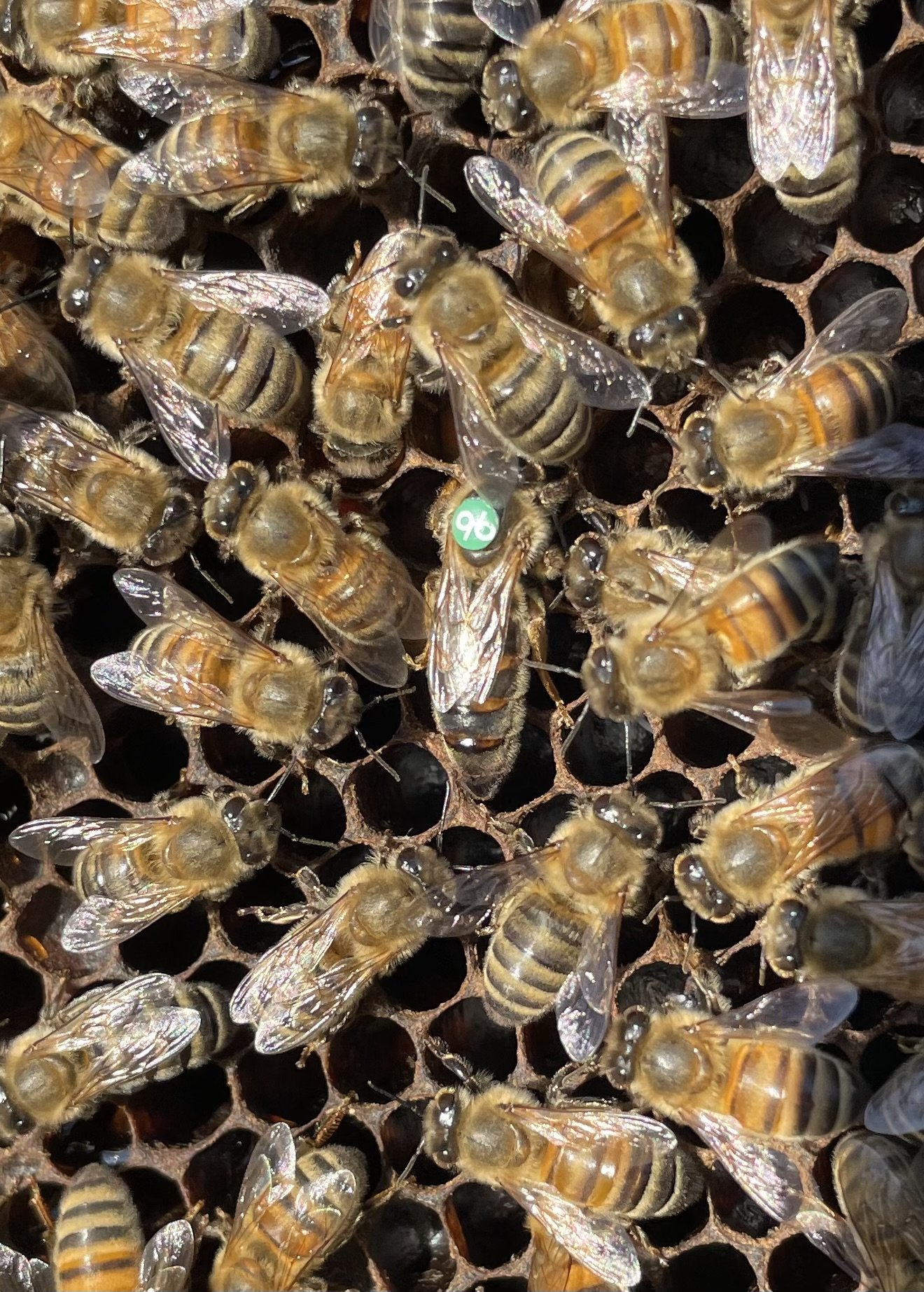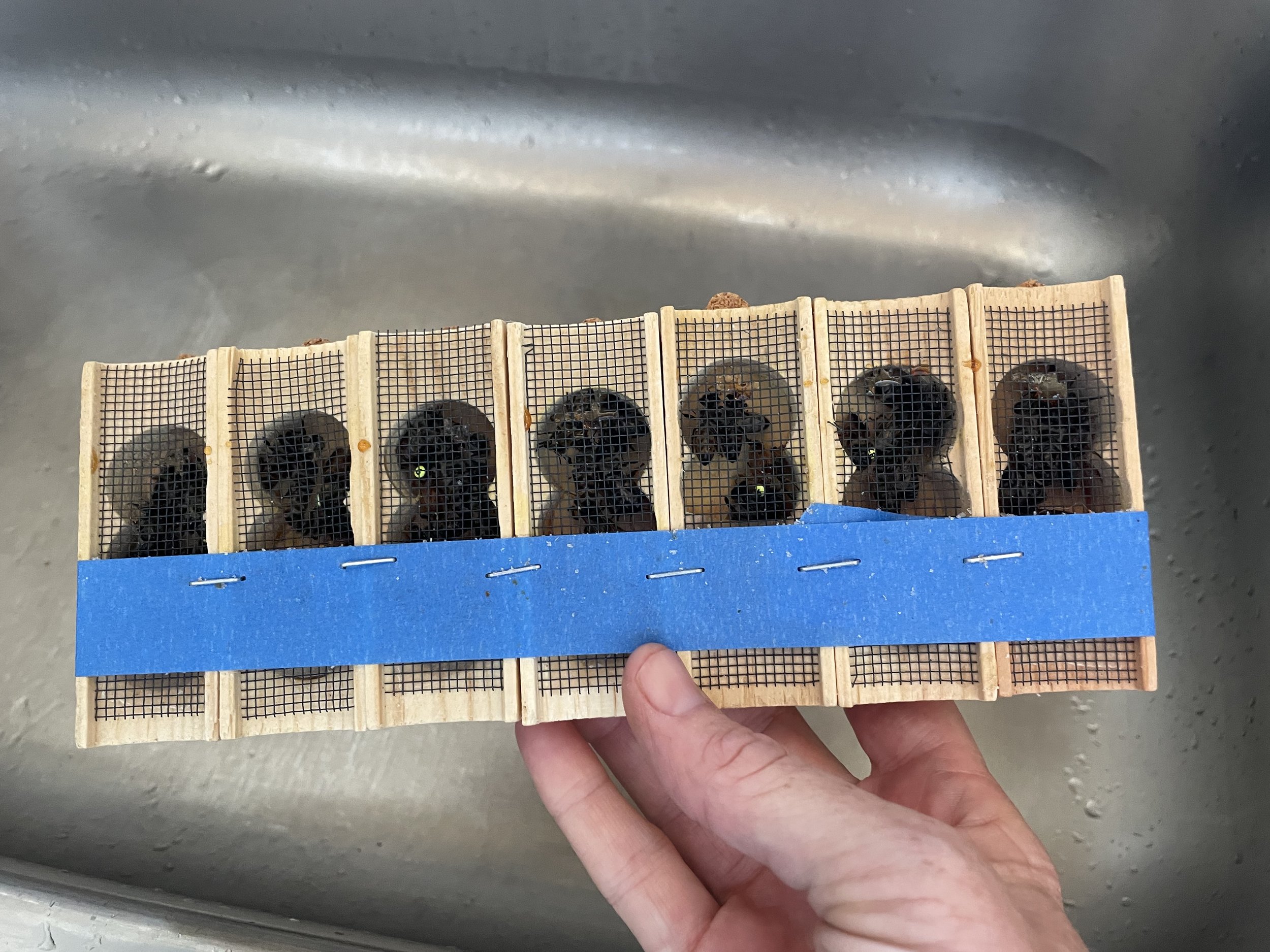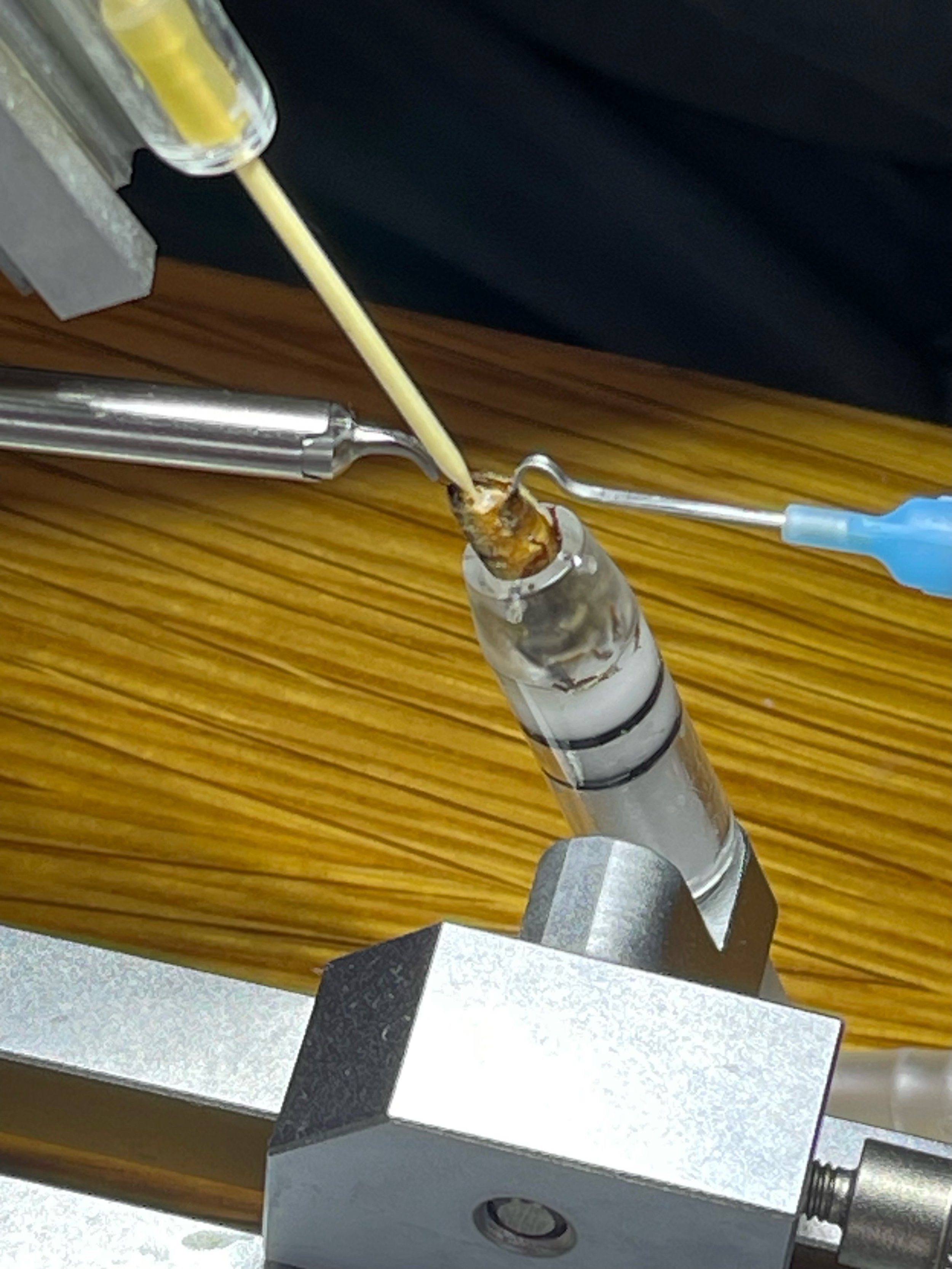Instrumental Insemination of Queens
/After I’d been raising and selling queens for over a decade, I started learning to instrumentally inseminate queens.
While in Washington to train with Sue Cobey I got to see how she and the team at Washington State operate their breeding program. This is Sue at work on a batch of breeders that were inseminated with semen the team collected on a trip to Eastern Europe in 2014.
Steve Sheppard from Washington State is pulling the capillary tubes of semen from the cryo tank. Steve has been an integral part of the team for breeding the New World Carneolans, and had I not been so caught up in the process I’d have been better at asking his official role in this work so I could accurately report it later. I was too thrilled to see semen collected form all over the world and stored for so many years. It was like being a part of the legacy of bee breeding in the US, if only to witness. I’m holding a tube from Turkey, collected in June of 2014.
Sue sent me a few of the queens I inseminated while in Washington to place into my own breeding program. The queens were raised by Megan Mahoney and sent to Sue, and were really only intended for practice. But a few were really pretty, and we couldn’t bear to dissect them all, so they found a new home in my apiary at Woolly Egg Ranch.
I’ve been grafting from the inseminated queens Sue sent me, and have produced four batches of Black queens from her daughters.
Back in the lab for the work of insemination. These next few shots of me in the lab were taken by Kristine Erving, master beekeeper in training, who I’ve been mentoring.
Anyone who has inseminated queens will tell you that the real work is in the drones. Here I’m collecting semen from a mature drones. Yes, they have a large endophallus.
Once enough semen has been collected, its time to inseminate. The queens are anaesthetized with CO2 during the process. Insemination replaces the queen’s need to take several risky mating flights with one single event, and ensures that she will mate only with drones from desirable genetic stock.
Once the queens have been inseminated, they are returned to their colonies. When the procedure is done well, inseminated queens can lead productive colonies for many years.











